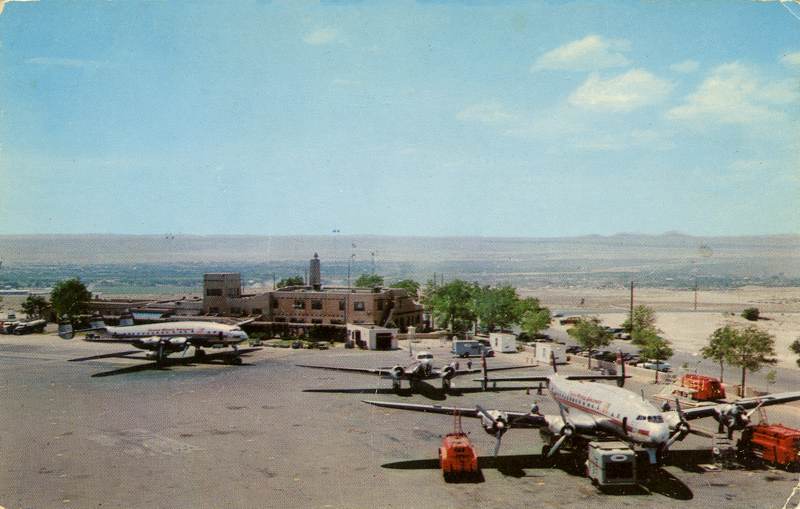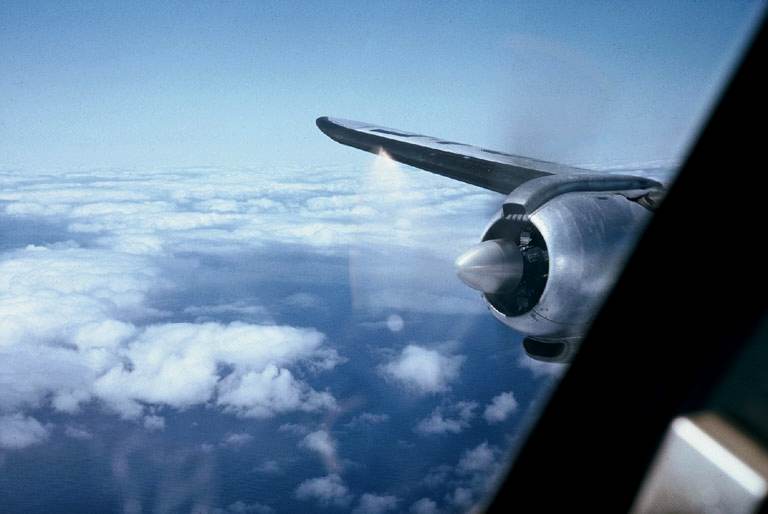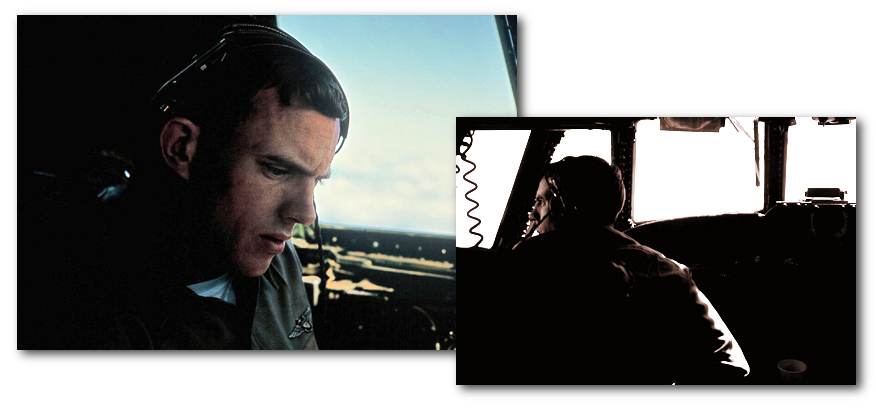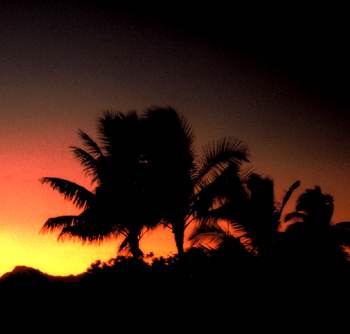Low & Slow in a “Connie” — Flying to Japan in 1963 (Part 2)
The next day, after checking in at the MATS counter at Travis AFB, I was pleased — downright thrilled, really — to learn that I would be flying to Japan in a Lockheed in a Constellation or “Connie”.
Love at first sight
I began my affair with the Connie when I was about 14. My family was driving through Albuquerque, New Mexico when my father decided to take a side trip to Albuquerque International Airport (now called Albuquerque International Sunport) to look at the planes. At that time, Trans World Airlines served Albuquerque, and there on the tarmac, waiting for passengers, was an empty TWA Connie.

My father, never a shrinking violet, asked at the TWA counter if we could see it up close. No problem! (Remember, that was before worldwide terrorism and plane hijackings.) Soon, we were on board, and I was sitting in the pilot’s seat. It was a hot New Mexico summer day, and I remember the cocoon-like warmth of the cockpit, redolent of old leather, oil, and hot metal. I wanted to stay on that plane forever, wherever it would take me. Alas, it took me nowhere, and soon we were on the road again.
Six years later, I was about to board another Connie, a C-121G Super Constellation, one of several being flown regularly between western North America and Asia by the U.S. Navy VR-7 squadron, known also as the Western Transport Air Force, a MATS unit. We would spend 26 hours together, not counting hours on the ground for food and re-fuelling, as we crossed the world’s largest ocean — the Pacific — from Travis AFB near San Francisco to Tachikawa AFB in Tokyo.
The “bare bones” of the flight to Japan
Upon boarding the Constellation, we were provided with a “Passenger Flight Information” form that included a map of the Pacific and blank spaces that could be filled in, based on details of our particular flight, MATS Mission #873.

My copy of the form, above, provides these bare-bone details about the flight:
• Depart Travis AFB at 1230 hours (1:30 p.m. local time for you non-military types), June 11, 1963. Destination: Hickam AFB, Hawaii.
• Cruise at 10,000 feet (3,048 metres) at 255 nautical miles per hour (293 mph / 472 kilometres per hour).
• Arrive Hickam AFB, Hawaii, at 1900 hours (7:00 p.m. local time) for refuelling and food. Depart Hickam at 2200 hours (10:00 p.m.), on a heading slightly south of due west. Destination: Wake Island.
• Arrive at Wake Island at 0530 hours (5:30 a.m. local time) for re-fuelling and breakfast, depart Wake Island at 07:40 hours, on a northwest heading. Destination: Tachikawa AFB, in the western part of Tokyo.
• Arrive Tachikawa at 1330 hours (1:30 p.m. local time). That arrival time is a guess; by the end of the flight I was too exhausted to worry about filling out the form with yet more detail. However, that arrival time conforms to my memory, and I had told my parents on the postcard I sent to them that the ETA (Expected Time of Arrival) was 1:30 p.m.)
The foregoing details don't really reveal what it was like to fly to Japan in a low, slow airliner. Here are some of my strongest memories and impressions:
• We flew low, very low. By the mid-60s, passenger jets were routinely cruising at 30,000 feet (9,144 metres). From our Constellation, only 10,000 feet above sea level, we could easily see whitecaps on the ocean below. We didn’t fly above the clouds so much as we skimmed the cloud tops.

• One odd thing about the MATS Connie was that all of the passenger seats faced the tail. We were told that it was a safety thing: in the event of a crash, the seat backs would protect us from injury. However, there has never been a study, to my knowledge, that confirmed that theory.
• As a confirmed, life-long pilot wannabe, near the end of our flight to Hawaii, I asked the steward (no stewardesses on MATS flights) if I could see the pilot. He said, “Just knock on the cockpit door.” The door was made of flimsy plywood. I knocked. The co-pilot opened it. I explained that I just wanted to see the cockpit. Without preamble, he said that he was going to get a cup of coffee. Did I want to sit in his seat? Silly question!

• The plane was on autopilot the entire time I was in the cockpit. Situated well forward of the engines, the cockpit — the “front office” — was remarkably quiet. The big silver propellers churned away, pulling us along at a leisurely 250 knots. Fair-weather cumulus clouds slid slowly beneath us.


— Bob Ingraham Photo
I was the first person on the plane to see Hawaii, unless the pilot just let me think so. When the co-pilot returned, I left my seat reluctantly and returned to the cabin.
When we landed in Hawaii, I got a first-hand lesson in earth’s geography. Hawaii, just 21 degrees north of the equator, has days and nights that are nearly the same length, and night falls quickly. In fact, there is virtually no twilight. When I stepped out of the Constellation and onto the airstairs, a brilliant orange sunset sky silhouetted palm trees. I grabbed my Nikon SP camera, took one picture, and darkness descended before I could take another.
Next, in Part 3: After flying all night from Hawaii, we land for breakfast and refuelling at tiny Wake Island — miles and miles from…everywhere!